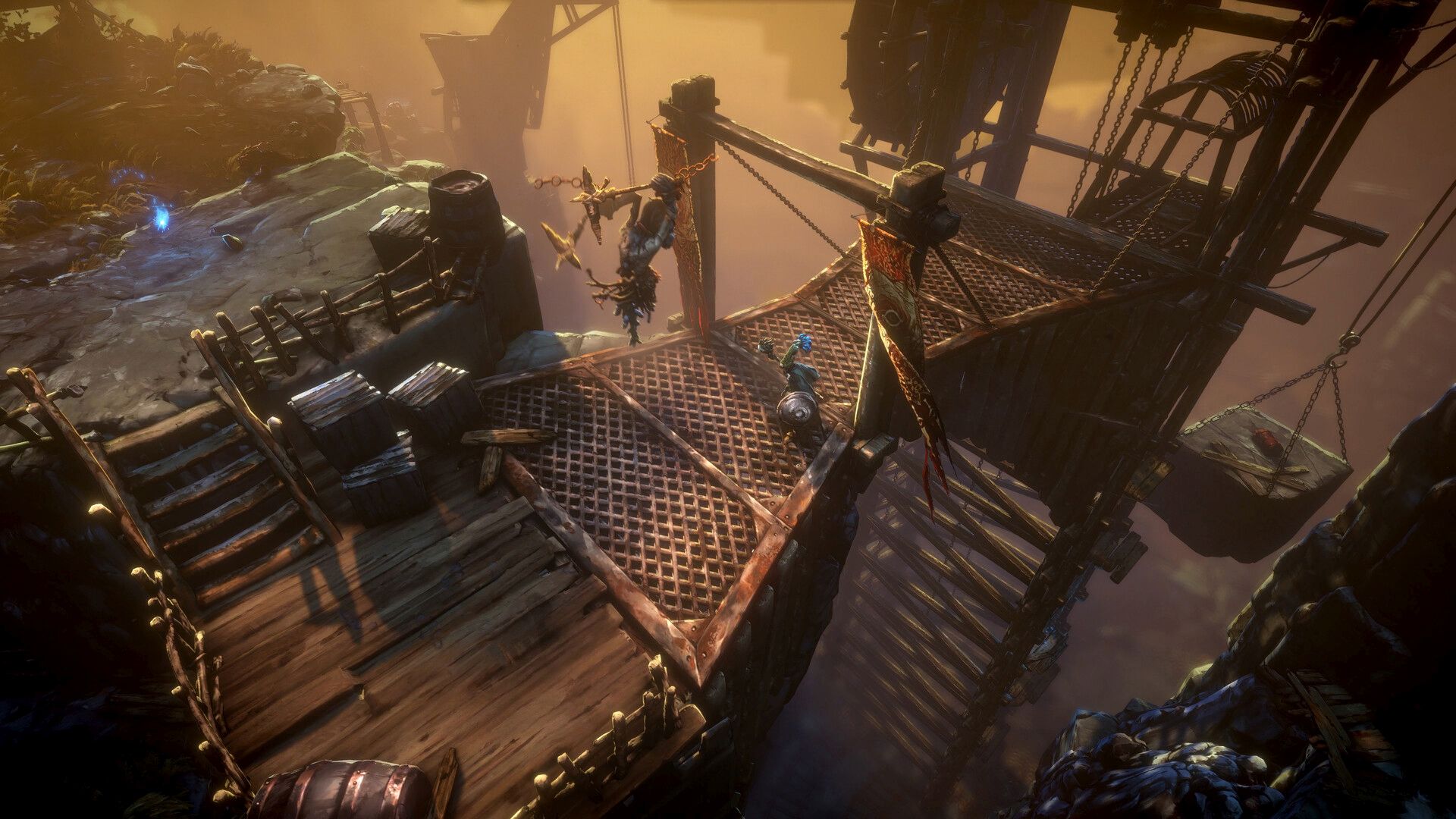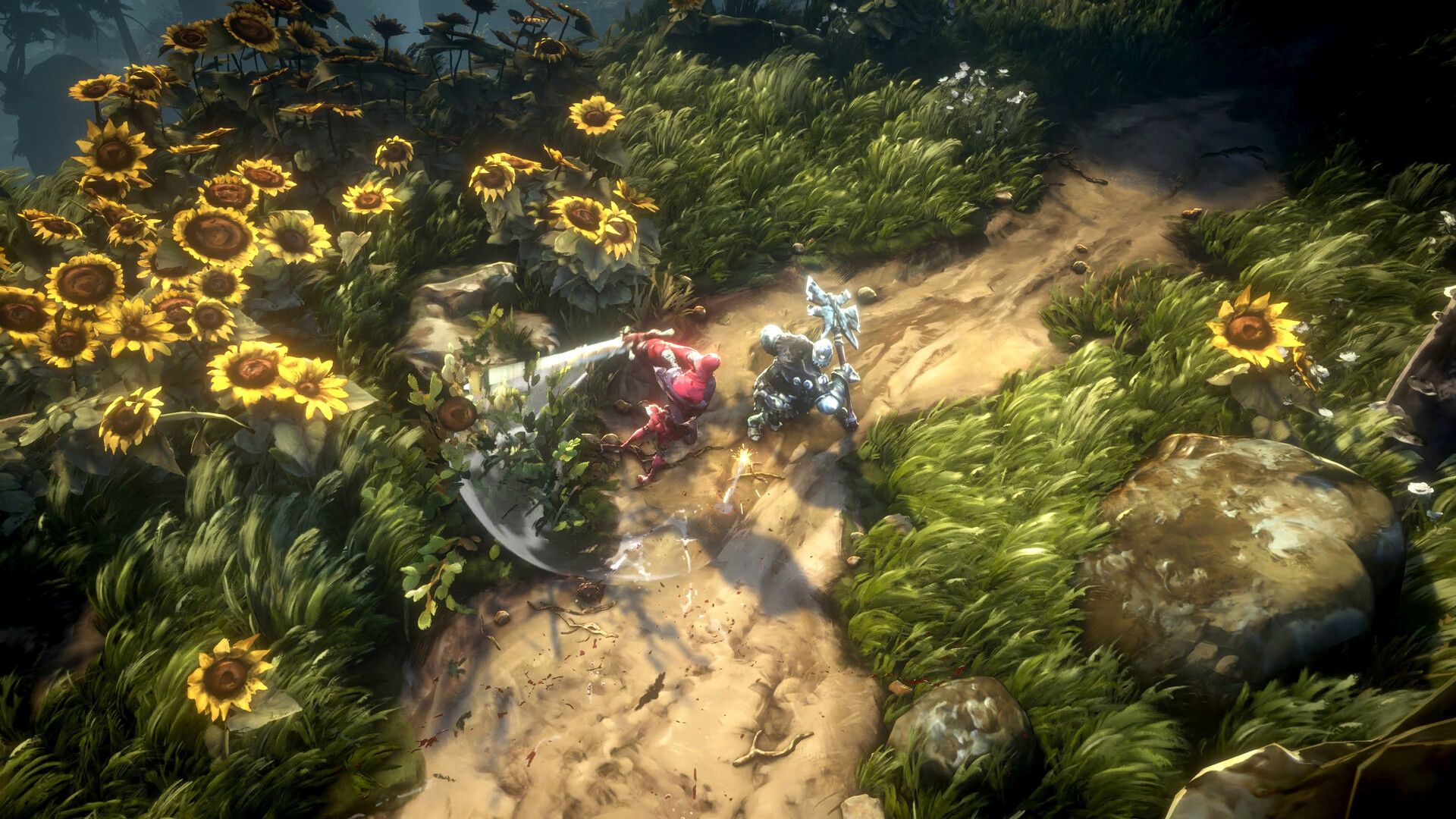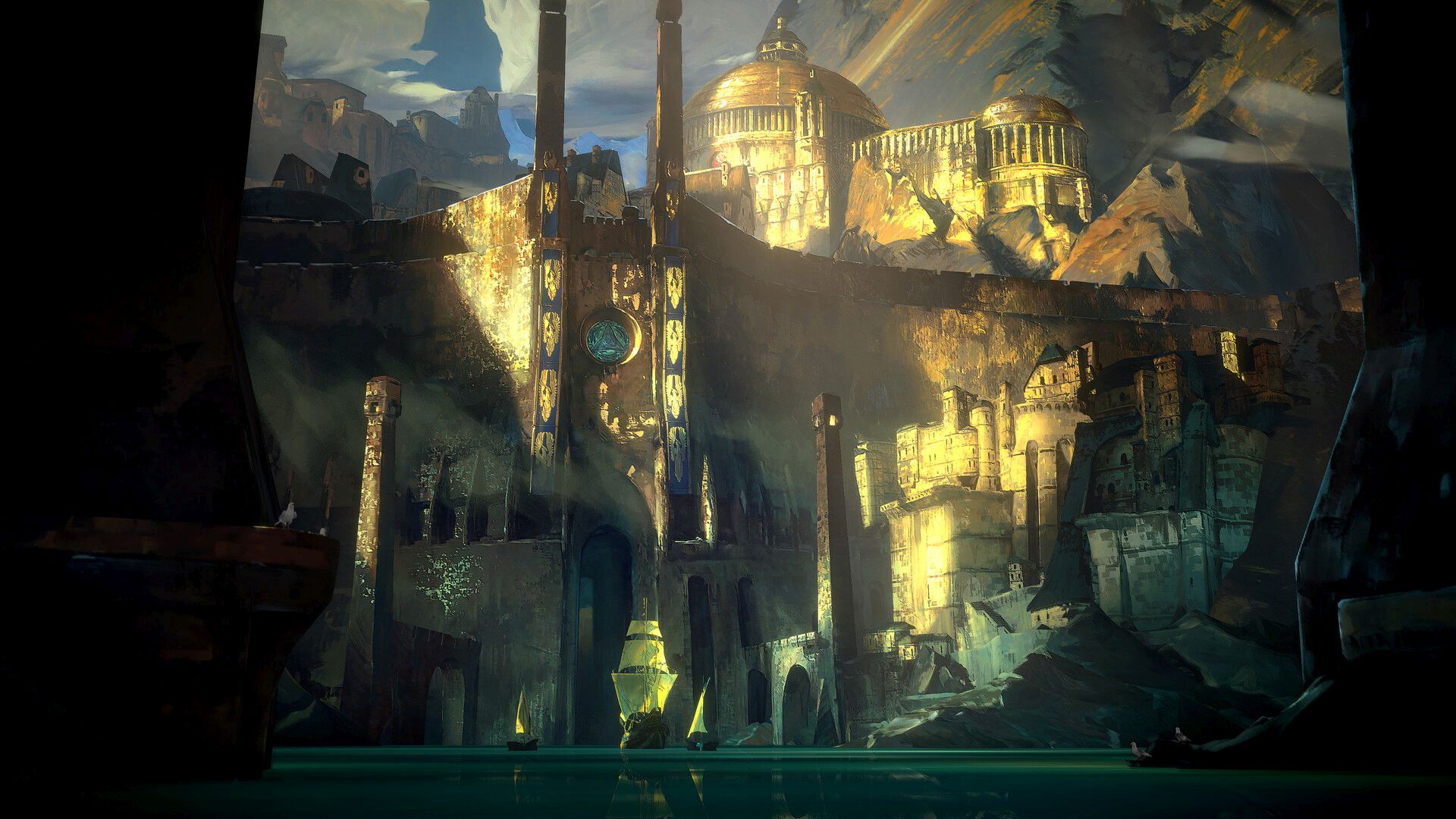No Rest for the Wicked Preview
Whether we’re talking about film, music, or video games, creators who have made successful products have a choice. They can repeat themselves or branch out and try something new. Both carry risks. Retread the past and people will complain you haven’t evolved. Stray from your lane and risk alienating old fans. Maybe the ideal solution is to carry over some essential elements from past successes while changing up others. That’s Moon Studios’ approach in No Rest for the Wicked, and boy howdy, does it work.
No Rest for the Wicked is an isometric action RPG. Imagine Dark Souls crossed with Diablo or Path of Exile. While that’s true at the most fundamental level, the game is far more inventive, challenging, and nuanced than a simple hybrid. It’s a Soulslike. It’s a hack-and-slash dungeon crawler. But it’s also a survival crafting game. That all of these elements mesh semi-coherently — let alone, work well — is something of a miracle.
Something Beautiful This Way Comes
Moon Studios demonstrated a flair for art and level design in Ori and the Blind Forest and its sequel. Once again, they bring their A-game to this project. No Rest for the Wicked is flat-out gorgeous. The environments are incredibly detailed and textured. The painterly art is enhanced by incredible lighting that’s at once moody, colorful, and mysterious. While some players will not vibe with the game’s exaggerated character designs, the in-engine cut scenes are impressive. NPCs are expressive and beautifully animated.

No Rest for the Wicked is not a traditional open-world game with a sprawling land mass. Instead, its levels are intricate webs of interconnected paths, hidden areas, shortcuts, and dungeons. Emphasizing verticality, exploring the world is a pleasure, once you understand why the fixed-view camera works the way it does. It’s very easy to miss ladders and climbable rocks, for example, or to miss the puzzle-like way you move through the environment. I went from frustration to a real sense of wonder and appreciation the longer I played.
The game’s music and audio are a perfect match for its art. The sounds of weather and combat are visceral. The game’s voice acting is excellent and, unlike some grimdark ARPGs, leavened with occasional humor. I appreciated that much of the game is not accompanied by constant music. I did, however, have some audio performance issues and drop-outs.
Mostly Masterful Mechanics
No matter how artistic the world might be, players of this genre come for the action. In this area, No Rest for the Wicked is amazingly confident and polished. I stress the idea of confidence because while it knows what it wants to do, some of those choices will be controversial. In fact, a few of them work against the game’s greatness.
Case in point: item durability. In No Rest for the Wicked, there’s no death penalty in terms of losing gear, coin, or experience. Dead enemies don’t respawn. However, with each death, weapons and armor degrade. At some point, they become completely broken. Unless the player finds a new weapon or NPC blacksmith, they’ll need to fight through the world with fists alone. Many players will complain that learning difficult bosses while death and respawns damage equipment is unfair.

To be fair, this is really only a problem in the first area, but I can see many fans of Diablo — or even recent FromSoftware games — being annoyed. It soon becomes clear, though, that everything is tied to the game’s gathering and crafting systems. There are no persistent healing items. The games “bonfires” are nothing more than respawn points, and don’t restore health or item durability. Health comes from gathering ingredients and cooking food consumables. Later, in the hub city of Sanctuary, gathering wood and stone is critical to building infrastructure and new NPC crafting locations. In the end, the durability issue comes down to whether it adds enjoyment, challenge, or value. Unfortunately, it’s hard to make a case that it does.
The Combat Question
I can see some players balking at No Rest for the Wicked’s durability and crafting systems. I can’t, however, see anyone complaining about its combat. Overall, it is slower-paced and focused on smart tactics, dodging, and well-timed parries. Both enemies and players can stagger each other and interrupt attacks. Like in Dark Souls, stamina management is critical.
The game has the usual assortment of melee weapons, bows, and magic. Magic uses focus points — earned during combat — for spell casting. Focus points are also used to activate special rune attacks. It’s clear from even a dozen hours of play that No Rest for the Wicked’s weapon, armor and upgrade systems guarantee a huge range of playstyles and long shelf life.

The Question of Performance
Many players have complained about serious performance issues, especially those with AMD GPUs. I have noticed some audio dropouts and initial loading times are very long. However, with a Ryzen 9 7950x and Nvidia 4080, framerates consistently hovered in the 120 range in 4K. Players with average systems might struggle but on the positive side of the ledger, Moon Studios has already released a patch to address some issues. That first patch also fixed some early game balance problems, adding more weapons to the first vendor and making cooking and crafting items more plentiful.
No Rest for the Wicked has just entered Early Access, which means that a lot of content is missing. This list includes co-op multiplayer, a great deal of the campaign and many quality-of-life features like being able to remap the controller.
Despite some understandable Early Access niggles, No Rest for the Wicked is an astoundingly polished game. It’s much more than a pretty retread of tired action RPG tropes. The game’s confident combination of mechanics, challenging combat, and incredibly engaging exploration already make it one of the year’s most promising games in a very crowded genre.
Thank you for keeping it locked on COGconnected.

